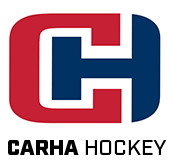With the recent announcement during the IIHF semi-annual congress that 3-on-3 hockey could potentially be introduced for the 2030 Winter Olympics, let’s take a look at what both the Pros and Cons of 3-on-3 hockey could be.
Pros
- Faster, More Exciting Games:
- The 3-on-3 format is known for its fast pace and open ice, which often leads to more breakaways, creative plays, and goals, making it highly entertaining for spectators.
- More Scoring Opportunities:
- With fewer players on the ice, there’s more space for offensive plays, leading to more goal-scoring chances, which can attract a broader audience, especially casual fans.
- Better Showcasing of Individual Skills:
- The reduced number of players places more emphasis on individual skill, giving star players the opportunity to shine in one-on-one situations and in fast transitions.
- Shorter, More Intense Games:
- The games can be completed more quickly, which may appeal to broadcasters and viewers who prefer condensed, action-packed sporting events.
- Attracting New Fans:
- The 3-on-3 format could attract new fans who are not as familiar with traditional 5-on-5 ice hockey but enjoy fast, exciting gameplay, similar to how 3-on-3 basketball has brought attention to that sport.
- Increased Athlete Participation:
- Introducing this format could allow for a greater number of countries or athletes to participate, given that fewer players are required per team, broadening Olympic participation.
Cons
- Lack of Traditional Ice Hockey Feel:
- Some purists and traditional hockey fans might dislike the move, arguing that it deviates too much from the standard 5-on-5 format that defines ice hockey’s strategic and physical nature.
- Less Emphasis on Team Tactics:
- 3-on-3 hockey often revolves around speed and individual skill, reducing the emphasis on complex team strategies, defensive systems, and full-team cohesion that characterize traditional 5-on-5 play.
- Risk of Overemphasis on Certain Players:
- Teams might rely heavily on their star players to dominate the ice in 3-on-3 play, potentially overloading certain individuals while underutilizing the broader team roster.
- Different Roster Construction:
- National teams might need to select players based on their suitability for 3-on-3 play, which could result in different lineup dynamics and potentially leave out strong players who excel in the traditional 5-on-5 format.
- Change in Olympic Hockey’s Prestige:
- Olympic ice hockey is one of the most prestigious tournaments in the sport, and some feel that introducing a 3-on-3 format diminishes the significance of winning a gold medal compared to the traditional full-team competition.
- Potential Injuries from Fatigue:
- The high-speed, continuous action of 3-on-3 hockey can lead to player fatigue, especially if shifts are long. This may increase the risk of injuries due to exhaustion, especially for top players who spend a lot of time on the ice.
Conclusion
The introduction of 3-on-3 hockey at the 2030 Winter Olympics could inject new life and excitement into the event but may also face resistance from traditionalists who prefer the full 5-on-5 format. Balancing the novelty with the sports heritage will be key to its success. Ultimately, the success of this format will depend on how well it balances the demand for faster, more entertaining games with maintaining the integrity and strategic elements that make hockey beloved sport.
